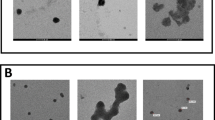Abstract
The effects of serum components and amino acids on the uptake and cytotoxicity of NiCl2 were examined in cultured Chinese hamster ovary (CHO) cells. CHO cells maintained in a minimal salts/glucose medium accumulated 10-fold more63Ni than did cells maintained in complete medium supplemented with 10% fetal bovine serum. Cell-surface binding of63Ni appeared to account for the majority of this increased accumulation of cell-associated nickel observed in the simple maintenance medium since such increases were reduced 70% by trypsin treatment. The addition of the Ni2+-binding amino acids cysteine or histidine to the salts/glucose medium markedly decreased63Ni accumulations, an effect not observed following addition of any of several amino acids that do not bind Ni2+. Supplementation of the salts/glucose medium with fetal bovine serum decreased in a concentration dependent fashion both the63Ni2+ uptake and cell detachment caused by Ni2+, while dialyzed (amino acid-free) serum was 3–5-fold less effective than undialyzed serum at reducing63Ni2+ uptake and similarly exhibited only a slight protective effect against nickel-induced cytotoxicity. Supplementation of dialyzed serum with cysteine at levels approximating those in whole serum partially restored its inhibitory activity toward nickel uptake by cells and restored completely its inhibition of nickel's cytotoxicity, indicating the predominant role of specific amino acids over serum proteins in regulating the uptake and subsequent cytotoxicity of Ni2+. Addition of cysteine to the salts/glucose medium during a 2 h exposure of cells to either 100 μM HgCl2 or 1 mM NiCl2 masked the cytotoxic effects of these metal ions. These results demonstrate the importance of extracellular small molecular weight metal ion chelators in altering the biological effects of metal ions at the level of metal uptake.
Similar content being viewed by others
References
H. Tsuda and K. Kato,Mut. Res. 46, 87 (1977).
G. R. Douglas, R. D. L. Bell, C. E. Grant, J. W. Wytsma, and K. C. Cora,Mut. Res. 77, 157 (1980).
M. Nishimura and M. Umeda,Mut. Res. 68, 337 (1979).
G. R. Russel, C. J. Nader, and E. F. Portick,Cancer Lett. 10, 75 (1980).
D. E. Amacher and S. C. Paillet,Mut. Res. 78, 279 (1980).
J. A. DiPaolo and B. C. Casto,Cancer Res. 39, 1008 (1979).
M. Costa,Metal Carcinogenesis Testing: Principles and In Vitro Methods. Humana Press, Clifton, NJ 1980.
M. Costa, J. Simmons-Hansen, C. W. M. Bedrossian, J. Bonura, and R. M. Caprioli,Cancer Res. 41, 2868 (1981).
B. Sarkar, Conference on Nickel Toxicology, Swansea, Wales, UK, Sept., 1980.
M. Webb and S. N. Weinzierl,Br. J. Cancer 26, 292 (1972).
F. O. Brady,Trends in Biochem. Sci. 7, 143 (1982).
F. Ulrich,Am. J. Physiol. 220 (4), 958 (1971).
Author information
Authors and Affiliations
Rights and permissions
About this article
Cite this article
Abbracchio, M.P., Evans, R.M., Heck, J.D. et al. The regulation of ionic nickel uptake and cytotoxicity by specific amino acids and serum components. Biol Trace Elem Res 4, 289–301 (1982). https://doi.org/10.1007/BF02786543
Received:
Accepted:
Issue Date:
DOI: https://doi.org/10.1007/BF02786543




